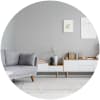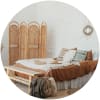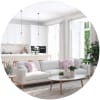What is Mid-Century Modern Design?

Mid-century modern design is challenging to define but has become wildly popular over the decades. Author Cara Greenberg coined the term "mid-century modern design" in her 1984 book Mid-Century Modern: Furniture of the 1950s. Scholars and design pros soon recognized the style and more people began incorporating it into architecture, furniture, and interior design projects.
Some historians and design pros say the period extends from the early 30s to the mid-60s, although others limit mid-century modern design from the decade spanning from 1947 to 1957. However, most everyone agrees the movement took off after World War II as a response to a more optimistic future where technology and modernism came together to create a fresh, new look.
Mid-century modern design is sometimes used interchangeably with mid-century design. The main difference is the contemporary version values function over form with a unique twist, as you'll find bold, clean lines in the more current version. Mid-century modern also favors some decorative accents and splashes of bold color. A reasonable frame of reference is to think of mid-century modern design as a modern twist on 50s home design trends where vintage meets modernism's clean, bold lines.
It can get a little overwhelming but don't stress about what mid-century modern design is or isn't because the interpretation is often loose and offers some flexibility. Here’s what to know and how to outfit your apartment with a mid-century modern design.
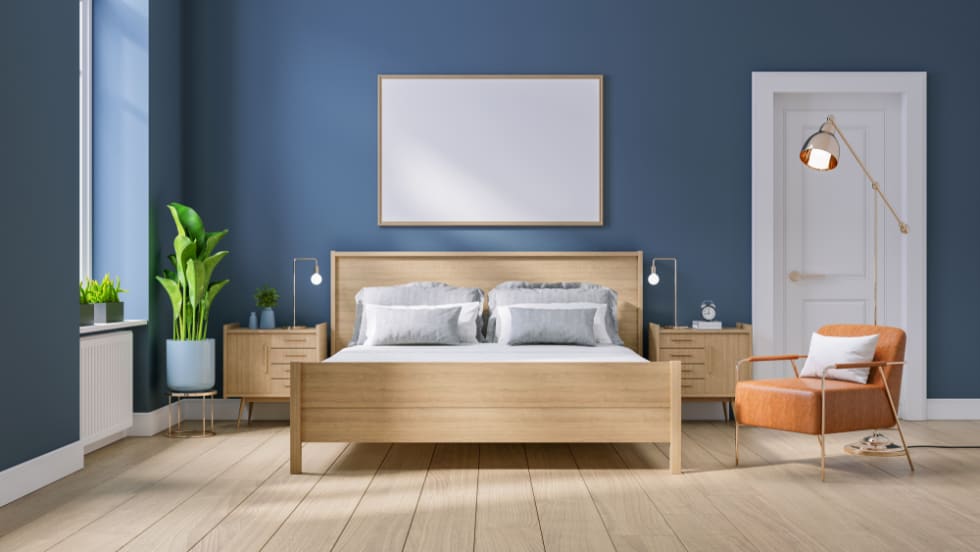
Characteristics of Mid-Century Modern Design
Although mid-century modern design can have different interpretations depending on who you ask, you should look for some key characteristics. Here are the basics.
Color
Mid-century modern design leans towards a primary color palette without many embellishments and flourishes. White walls and medium-toned or teak woods are hallmarks of the design movement. Some designers lean towards the traditional orange, brown, and mustard yellow colors celebrated in midcentury design. Choose neutral tones and add occasional bright accents to tie the room together for a more modern touch.
Space
The more traditional mid-century modern design movement sometimes incorporates oversized pieces, like a credenza. Today’s modern version leans towards minimalism and creating uncluttered areas. People often arrange rooms to give more space with sparse window treatments to let in the natural light and symmetrical furniture placement, leaving the room feeling airy and open.
Furniture
Mid-century modern furniture focuses on solid and clean lines and geometric shapes. It prioritizes function over form, and you're likely to find simple furniture with tapered, wooden legs. However, it's also appropriate to include bright throw colors or an accent chair to liven up your space. The key to using mid-century modern design is to use bright colors or accents sparingly.
Instead of the oversized, bulky furniture sometimes seen in mid-century modern design, the contemporary version focuses on the understated. For example, a TV or media console may be just big enough to hold your essentials and come in teak wood or muted tones. A comfortable, stuffed chair may be curved to look more compact and feature slender, wooden legs to fit into a reading nook or a small living room. Dining chairs or accent chairs may have a tapered, wooden frame and a padded seat to be folded and tucked into an apartment closet.
Decor
Mid-century modern design makes a powerful impact while focusing on simplicity. It doesn’t require much fuss to create an eye-catching space. Nature is a significant player in mid-century modern design and effortlessly combines urban decor with natural materials. Small, glass succulent planters and basic white pots with a leafy plant are all it takes to get in touch with nature.
Abstract, geometric art, or throw pillows liven up an otherwise muted space. If you're going for a neutral or earth-toned color palette, a bright-colored lamp or accent chair brings more life to your apartment.
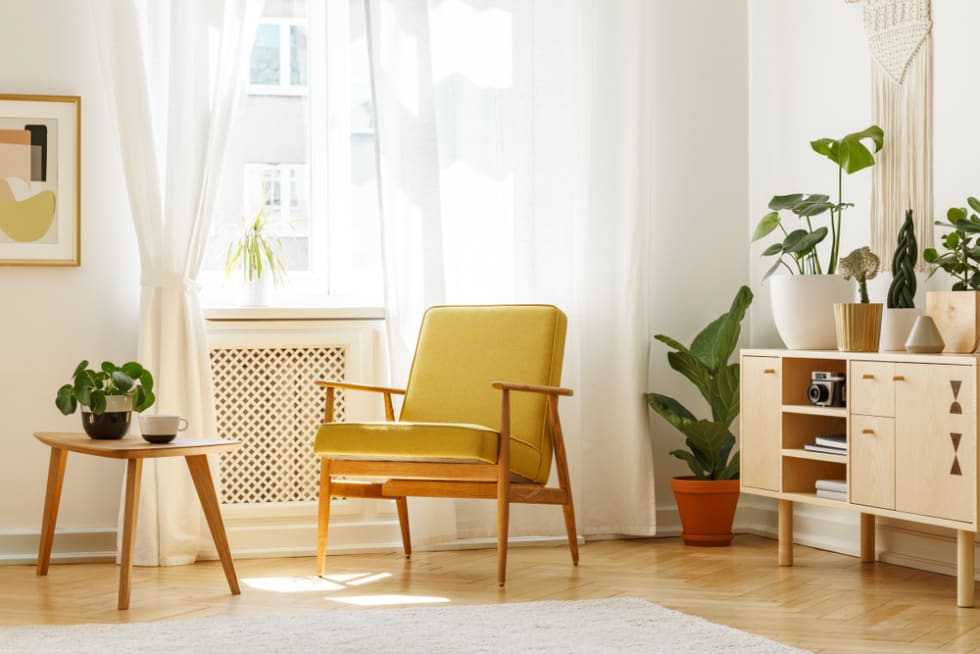
Benefits of Mid-Century Modern Design
One of the primary benefits of mid-century modern design is its focus on space-saving functionality. As a result, unnecessary accent furniture isn't usually found in the design movement, saving you time and money when decorating your apartment.
Mid-century modern design can also be versatile and incorporated into your existing decor, depending on your style preferences. Modern, vintage, and minimalism blend with mid-century modern style for a sophisticated and contemporary look.
While mid-century modern design can get pricey, it is also easy to find replications at discount retailer stores. In addition, thrift and consignment stores frequently sell traditional mid-century furniture incorporated into a more modern design style.
Unlike strictly modern and highly contemporary design, mid-century modern design is timeless and easily transitions through different eras and adapts to new trends. Timeless design leans towards understated and sophisticated, which pairs perfectly with mid-century modern design. You can scale it up or down and swap out pieces to keep changing your look without adopting a new style from scratch.
Tips to Bring Mid-Century Modern Design Into Your Apartment
Mid-century modern design is intentional and functional, but you don't need much to get started creating your new space. Use a neutral color palette, like earth tones, with a few pops of colors. Or you can go ultra-modern with a stronger base of orange rugs and furniture that nods to the more traditional mid-century modern design.
If you like to entertain and are worried about being short on space, small ottomans big enough to sit on with inside storage help keep your apartment clutter-free. You can also tuck foldable, padded stools or dining chairs into a closet.
People commonly use texture in mid-century modern design, such as a simple rug and tweed cushions or small, stuffed armchairs. With few exceptions, oversized furniture will clutter your space, so opt for something smaller and more apartment-friendly. A simple, circular nightstand or simple coffee table is all you need to hold your wine glass or other necessities.
You can forgo artwork altogether and pick up some fun geometric sculptures or paintings. Add some plants to your space, and you can even go a little glam with the help of a geometric chandelier or lamp.
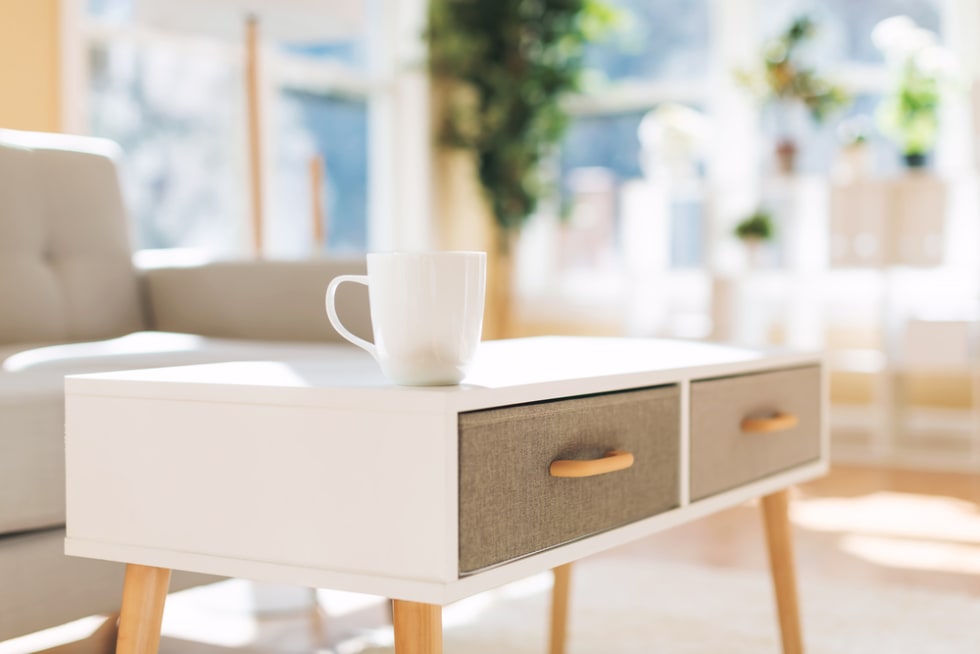
Final Thoughts
Mid-century modern design is known for its clean, modern lines and highly functional style. Add splashes of color and accent pieces with restraint while still bringing some life to your apartment. Best of all, mid-century modern design can be affordable and doesn't require much to create a winning look that transitions through the trends.
Hoping to decorate your dream home to a T? Sign-up for Apartment List to start searching today!
Share this Article

